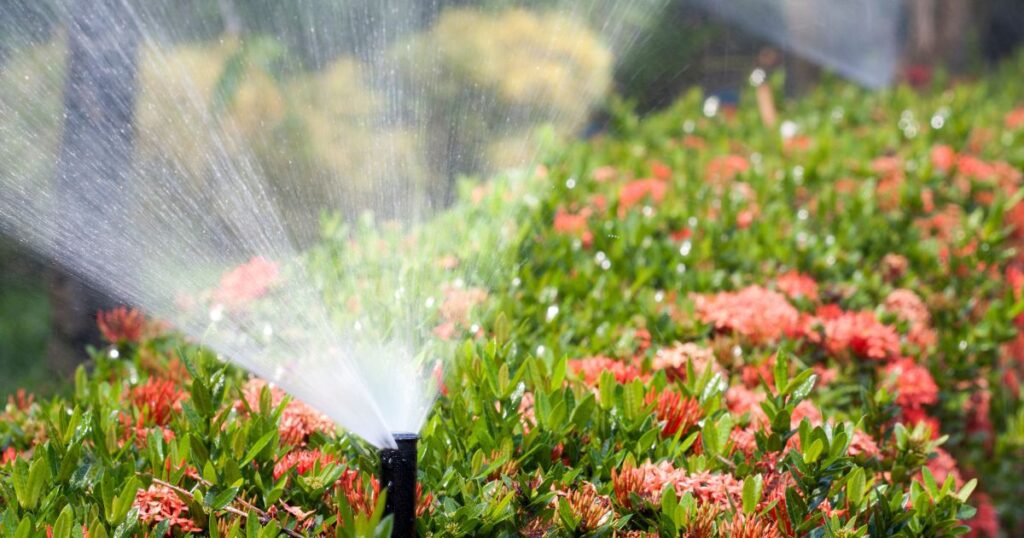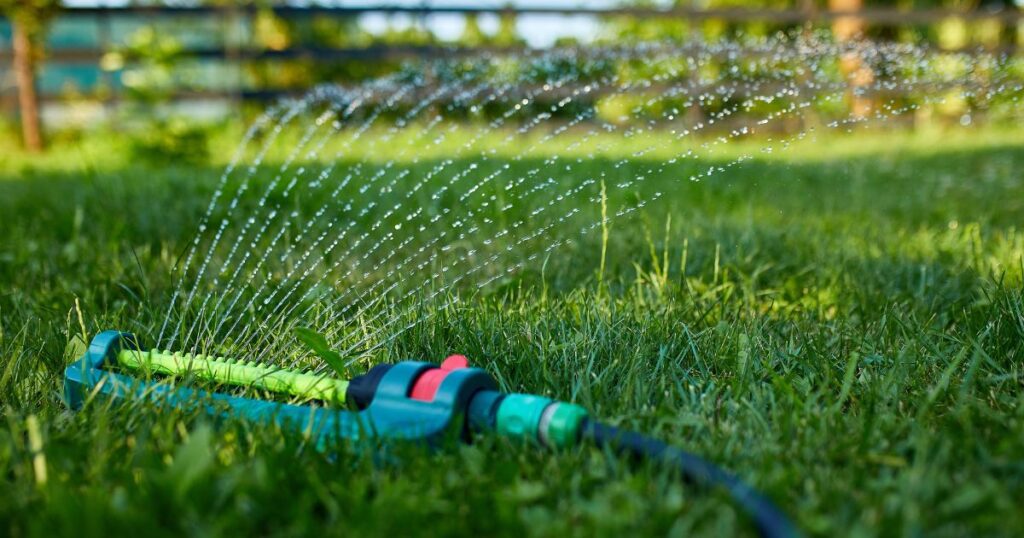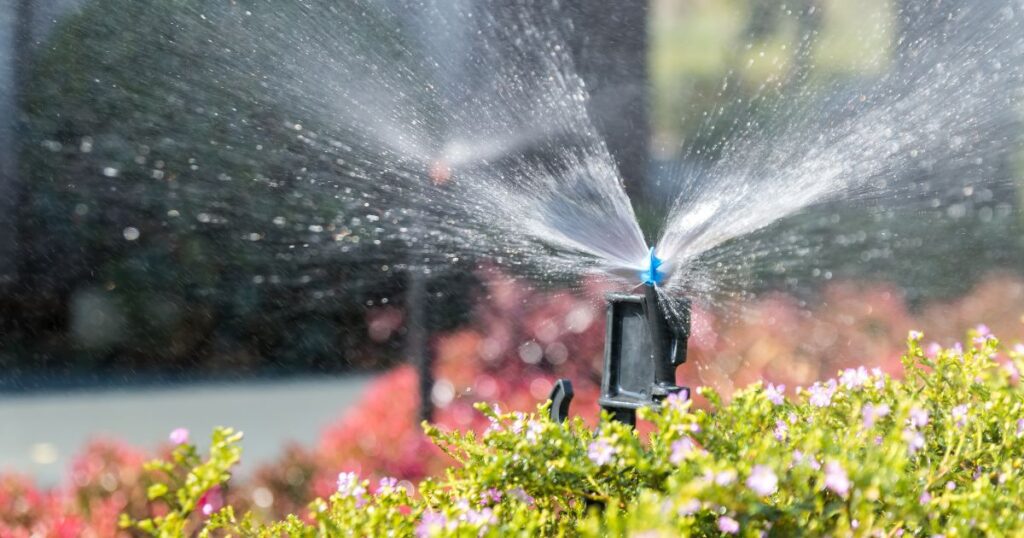
Is your sprinkler system feeling a bit lackluster? Fear not, as we have the perfect solution to reignite the full force of flowing water. In this comprehensive guide on how to prime a sprinkler pump, we’ll unveil the secrets of pump priming, unlocking the true potential of your system and transforming your lawn into a neighborhood envy. Get ready to dive into the world of pump priming, where we’ll share invaluable tricks and expert tips to revive your sprinkler system and receive heartfelt gratitude from your thirsty plants.
To prime a sprinkler pump, start by turning off the power to the pump and opening the priming valve. Fill a bucket with water and pour it into the priming port until the water flows out of the air vent. Once the pump is filled with water, close the priming valve, restore power to the pump, and you’re good to go!
The Importance of Sprinkler Pumps in Maintaining A Healthy Lawn or Garden
A well-maintained lawn or garden not only looks beautiful but also adds value to your property. However, maintaining a pristine lawn or garden requires consistent watering at regular intervals.
For homeowners who live in areas with low water pressure or those who have large yards that require extensive irrigation systems, using a sprinkler pump can be instrumental in achieving these goals. A sprinkler pump increases the overall efficiency of your irrigation system by boosting the pressure and flow rate of the water supply.
This increased pressure ensures that each plant gets enough water for healthy growth without wasting excess resources on areas that do not need them. The benefits of using a sprinkler pump extend beyond just ensuring adequate hydration for your plants; they also save time and effort on manual labor required for watering large areas regularly.
The Importance of Priming Your Sprinkler Pump Before Use
Priming your sprinkler pump before use is essential to maximize its efficiency and lifespan. The process of priming involves removing any trapped air from inside the pump’s housing and filling it with water. This ensures that the pump operates smoothly without causing any damage to its internal components.
When a sprinkler pump runs without being primed correctly, it can cause several problems. For example, if there is air trapped inside, it can prevent the water from moving through the system, leading to insufficient watering or even a complete breakdown of the pump.
To maintain longevity and performance, it’s essential to understand how to prime a sprinkler pump. Priming your sprinkler pump not only ensures smooth operation but also safeguards against potential overheating and damage to internal components like the impeller or motor. By following the necessary steps to prime your sprinkler pump, you can enjoy reliable functionality without any concerns about potential risks or issues.
Types of Sprinkler Pumps
There are different types of sprinkler pumps available on the market today, each with unique features and capabilities. Some common types include centrifugal pumps, jet pumps, and submersible pumps, among others.
Centrifugal pumps are ideal for garden irrigation systems as they have high flow rates but low-pressure capabilities. Jet pumps work best in shallow wells where there is enough water supply but low pressure, while submersible pumps are suitable for deep wells as they have high-pressure capabilities.
The type of sprinkler pump you choose depends largely on your specific needs and preferences. It’s essential to consider factors such as water source availability, yard size, and desired flow rate when selecting a particular type.
Components of a Typical Sprinkler Pump
Understanding how your sprinkler pump works is crucial in maintaining its optimal performance over time. A typical sprinkler pump comprises several critical components that work together to deliver adequate water supply throughout your irrigation system.
Some key components include the impeller responsible for circulating water through the system, the motor that powers the pump, and the pressure switch that controls water flow based on set parameters. Other notable components include check valves that prevent backflow, strainers to filter impurities from water, and gauges to measure pressure.
Each component plays a crucial role in ensuring the optimal performance of your sprinkler pump. As such, regular maintenance and inspection of these parts can help prolong their lifespan while keeping your lawn or garden healthy and well-watered.

Understanding Sprinkler Pumps
Exploring the Types of Sprinkler Pumps in the Market
When it comes to sprinkler pumps, there are several types available in the market, each designed for specific purposes. The most common types include self-priming pumps, submersible pumps, and centrifugal pumps.
Self-priming pumps are usually mounted above ground level and draw water from a nearby source, such as a well or surface water supply. These types of pumps have an impeller that can create a vacuum and draw water into the pump’s housing, ensuring they do not require priming before use.
Submersible pumps are installed beneath ground level and operate by pushing water up to the surface using an impeller that is submerged in water. Due to their location below the ground level, they don’t require priming before operation.
Centrifugal pumps come in different subtypes, such as horizontal or vertical, and can be electrically powered or fuel-powered. These powerful machines use kinetic energy to push water through pipes by spinning their impellers at high speeds.
Components of a Typical Sprinkler Pump
Sprinkler pumps have three key components: an impeller, a motor, and a pressure switch. The impeller is responsible for generating pressure within the pump by spinning rapidly against the housing. As it spins faster and faster, it creates suction that draws in water from its source.
The motor powers the impeller by connecting to it through a driveshaft; this is usually located on top of the pump housing. A typical motor runs on electricity but can also be powered by diesel or gasoline engines.
The pressure switch helps regulate water flow within your irrigation system automatically. When there is no demand for water from your irrigation system, this switch turns off your sprinkler pump automatically so that no energy is wasted.
Understanding the different types of sprinkler pumps and their components is crucial to maintaining a healthy lawn or garden. It helps determine the most suitable type of pump for your needs and ensures you are well-equipped to troubleshoot any problems that may arise during use.
Reasons for Priming a Sprinkler Pump
Understanding the Importance of Priming Your Sprinkler Pump
A sprinkler pump is a crucial component in any lawn or garden irrigation system. It works by drawing water from a water source such as a well, lake, or pond and distributing it throughout the designated area.
However, to work efficiently, the pump must be primed before use. This means that any air trapped inside the pump needs to be removed before it can operate effectively.
The Negative Effects of Trapped Air on Your Sprinkler Pump
Air pockets inside your sprinkler pump can cause several problems that will affect its efficiency and performance. When the air gets trapped inside the pump, it creates resistance and prevents water from flowing through it efficiently. This results in low pressure, reduced coverage area for your sprinklers, or even complete failure to deliver any water at all.
Additionally, air pockets act as an insulator between the impeller and water, which causes overheating of the motor. The overheating will eventually lead to permanent damage to your sprinkler pump’s motor if left unchecked.
RELATED: How to Find Buried Sprinkler Valves: A Beginner’s Guide
The Advantages of Priming Your Sprinkler Pump
Priming helps remove any trapped air in your sprinkler pump and allows water to flow freely through the system. By doing so, you’ll ensure that your irrigation system is working at peak efficiency without wasting electricity or risking motor damage due to overheating. Moreover, priming ensures that there is enough water within your sprinkler system ready for immediate use once you turn on the power supply as opposed to waiting for some time during which air is pushed out naturally.
The Best Time To Prime Your Sprinkler Pump
You should ideally prime your sprinkler pump after repairs or maintenance work has been done on it since this often involves draining all fluid from the pump’s system. When the repairs are complete, and you are ready to resume irrigation, it is critical to prime your sprinkler pump before turning it on.
Steps for Priming a Sprinkler Pump
1. Turn off the power supply to the pump before starting to prime your sprinkler pump; make sure to turn off the power supply to the pump. This is important because water and electricity should never mix, and turning off the power ensures that you stay safe while priming your pump.
2. Open up any valves or plugs on top of the pump housing next, locate any valves or plugs on top of the pump housing, and open them up. This will allow water to flow freely through the system and help remove any trapped air inside.
3. Fill up with water until it reaches full capacity. Now it’s time to start filling up your sprinkler pump with water. Using a hose or bucket, fill up the system until it reaches full capacity. Make sure to keep an eye on the gauge or pressure switch as you fill up so you don’t overfill it.
4. Close all valves or plugsOnce you have filled up your sprinkler pump with water, close all valves or plugs that you opened earlier. This will prevent any water from leaking out and ensure that your system is fully primed.
5. Turn on the power supply to start pumpingTurn back on the power supply to your sprinkler pump and watch as it starts pumping water through your system! Keep an eye on the gauge or pressure switch as it runs, and make sure everything is working properly. Overall, priming a sprinkler pump can be a relatively simple process if done correctly. By following these step-by-step instructions, you can ensure that your system is fully primed and ready for use in no time! Remember to always prioritize safety when working with electricity and water, and never hesitate to call in a professional if you are unsure about any steps in the process.
Troubleshooting Common Issues with Sprinkler Pumps
When the Pump Will Not Prime
If your sprinkler pump is not priming, it could be due to a variety of reasons. One common issue is having low water levels in the well or storage tank, which can lead to air getting trapped inside the pump. Check your water supply and fill up the well or tank if necessary.
Another potential issue is a clogged or damaged impeller, which can prevent water from flowing through the system. Check for any blockages or damages and replace as needed.
Low Water Pressure
If you notice that your sprinkler system has low water pressure, there are several factors that could be causing this problem. First, check your pressure switch to make sure it’s set correctly according to the manufacturer’s instructions. If it’s not set properly, adjust it accordingly.
Another potential cause of low water pressure is a clogged nozzle in one of your sprinkler heads. Check each head and clean any debris that may be blocking the nozzle.
Noisy Pump Operation
Excessive noise coming from your sprinkler pump can indicate a variety of issues, including loose fittings, damaged bearings, worn-out bushings, or coupling halves, etc., Any loose parts should be tightened immediately, while worn-out parts need replacement at once.
Pump Motor Failures
A motor failure in your sprinkler pump can occur due to overheating caused by running at high speeds for extended periods of time without rest breaks; this causes damage to internal components like windings and bearings, resulting in complete motor failure, eventually requiring replacement by an expert technician.
RELATED: How To Winterize A Sprinkler System With Backflow Preventer
Frequently Asked Questions
Does a sprinkler pump need to be primed?
Yes, a sprinkler pump typically needs to be primed before it can operate efficiently. Priming ensures that the pump is filled with water and creates the necessary suction for proper water flow.
How do I keep my sprinkler pump primed?
To keep your sprinkler pump primed, ensure that the pump is always submerged in water. Regularly check the water level in the pump’s intake or priming chamber and refill it as needed to maintain the primed state.
How do you prime a sprinkler pump with a hose?
To prime a sprinkler pump with a hose, you can connect a garden hose to the pump’s intake or priming port. Turn on the water supply and allow the pump to fill with water until it is fully primed. Once primed, you can start the pump.
How do you manually prime a pump?
To manually prime a pump, you need to fill the pump’s priming chamber or intake with water until it is completely filled. This can be done by pouring water directly into the chamber or using a manual priming device. Once the chamber is filled, the pump can be started.
How do you know if a pump is primed?
You can usually tell if a pump is primed by checking the pump’s pressure gauge or observing the flow of water. If the pressure gauge shows a reading within the normal operating range and water is flowing smoothly through the system, it indicates that the pump is primed.
What happens if you don’t prime a pump?
If a pump is not properly primed, it may struggle to draw water and may experience reduced or erratic flow. In some cases, the pump may fail to operate altogether. Priming is essential to ensure efficient water flow and prevent damage to the pump.
Conclusion
Priming a sprinkle pump might seem like an easy task, but it requires utmost caution and carefulness, as ignoring even minor details could result in significant problems down the line. Airlocks, clogs, and other issues could prevent your sprinkler pump from functioning correctly, but with proper troubleshooting and maintenance, your system should work flawlessly for years to come.
So always keep an eye out for any problems that arise in the operation of your sprinkler pump, and always be prepared to tackle them promptly. With a little bit of effort and knowledge, you can ensure that your lawn or garden remains healthy with a steady supply of water throughout the year.






